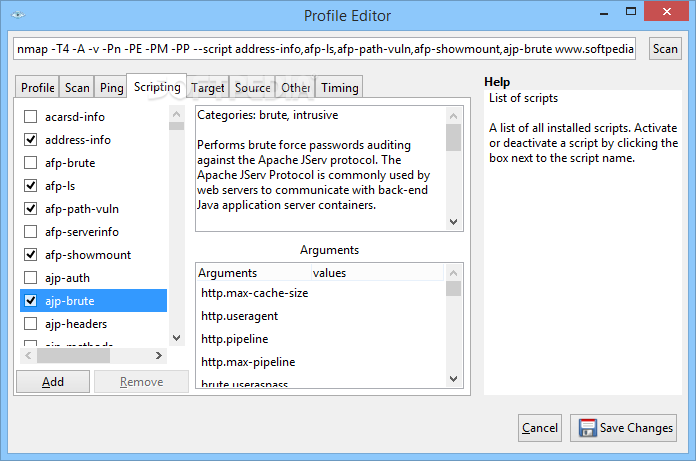

#ZENMAP ALTERNATIVE FREE#
This method detailed below will get you a network view and is very simple to do with a widely used, free tool called Zenmap.
#ZENMAP ALTERNATIVE HOW TO#
It’s important to know how to see all those devices at the network level. S2CID 44797603.Your home network has more connected devices than you are aware of. 2017 IEEE Conference of Russian Young Researchers in Electrical and Electronic Engineering (EICon Rus ). "Analysis of current internet wide scan effectiveness". ^ Arzhakov, Anton V Babalova, Irina F (2017).2016 International Conference on Information and Communication Technology Convergence (ICTC). "Implementation and vulnerability test of stealth port scanning attacks using ZMap of censys engine". ^ Lee, Seungwoon Im, Sun-Young Shin, Seung-Hun Roh, Byeong-hee Lee, Cheolho (2016).Proceedings of the 22nd ACM SIGSAC Conference on Computer and Communications Security - CCS '15 (PDF). "A Search Engine Backed by Internet-Wide Scanning". ^ Durumeric, Zakir Adrian, David Mirian, Ariana Bailey, Michael Halderman, J.2016 8th IFIP International Conference on New Technologies, Mobility and Security (NTMS). "Modeling of IP Scanning Activities with Hidden Markov Models: Darknet Case Study". ^ De Santis, Giulia Lahmadi, Abdelkader Francois, Jerome Festor, Olivier (2016)."Now You Can Scan the Entire Internet in Under an Hour". "ZMap: Fast Internet-Wide Scanning and its Security Applications" (PDF). ^ a b c Durumeric, Zakir Wustrow, Eric Halderman, J.USENIX Workshop on Offensive Technologies. "Zippier ZMap: Internet-Wide Scanning at 10 Gbps" (PDF). "Welcome to Zmap, the "one hour turnaround" internet scanner".

ZMap has also been used to detect vulnerabilities in universal plug and play devices and search for weak public keys in HTTPS website logs.
#ZENMAP ALTERNATIVE SOFTWARE#
One of the developers of ZMap, Zakir Durumeric, used his software to determine a computer's online state, vulnerabilities, operating system, and services. The application has been used for port 443 scans to estimate power outages during Hurricane Sandy in 2013. ZMap can be used for both vulnerability detection and exploitation. This results in about 2% of IP addresses being missed during a typical scan, but when processing billions of IP address, or potential IoT devices being targeted by cyberattackers, 2% is an acceptable tolerance. ZMap also speeds up the scanning process by sending a probe to every IP address only once by default, whereas Nmap resends a probe when it detects a connection delay or fails to get a reply. This process ensures that once ZMap starts sending probes out to different IPs, an accidental denial of service could not occur because an abundance of transmissions would not converge on one subnet at the same time. Building the initial list of numbers for every IP address takes upfront time, but it is a fraction of what is required to aggregate a list of every sent and received probe. The ZMap software takes every number from 1 to 2 32-1 and creates an iterative formula that ensures that each of the possible 32-bit numbers is visited once in a pseudorandom order. In contrast, ZMap uses cyclic multiplicative groups, which allows ZMap to scan the same space roughly 1,300 times faster than Nmap. As replies return, Nmap compiles them into a database to keep track of responses, a process that slows down the scanning process. Nmap sends out individual signals to each IP address and waits for a reply. ZMap iterates on techniques utilized by its predecessor, Nmap, by altering the scanning method in a few key areas.


 0 kommentar(er)
0 kommentar(er)
